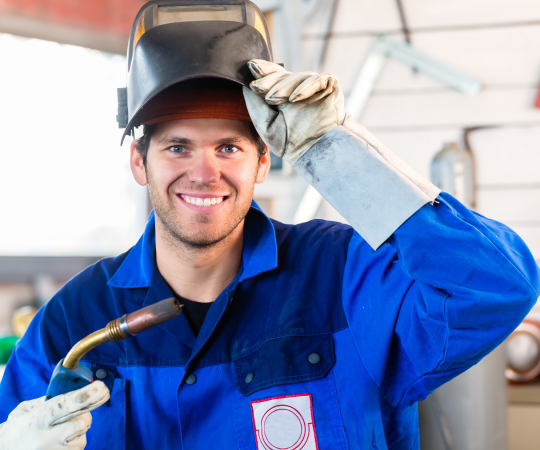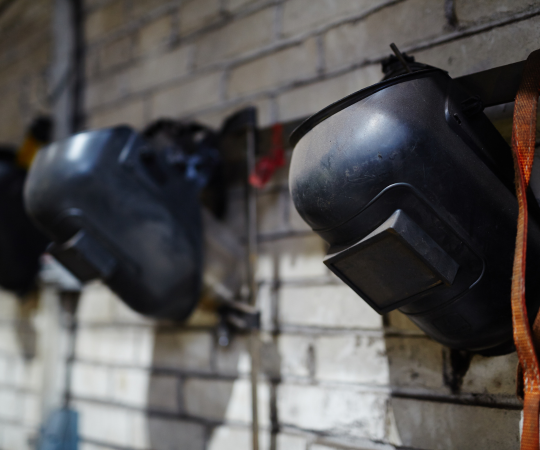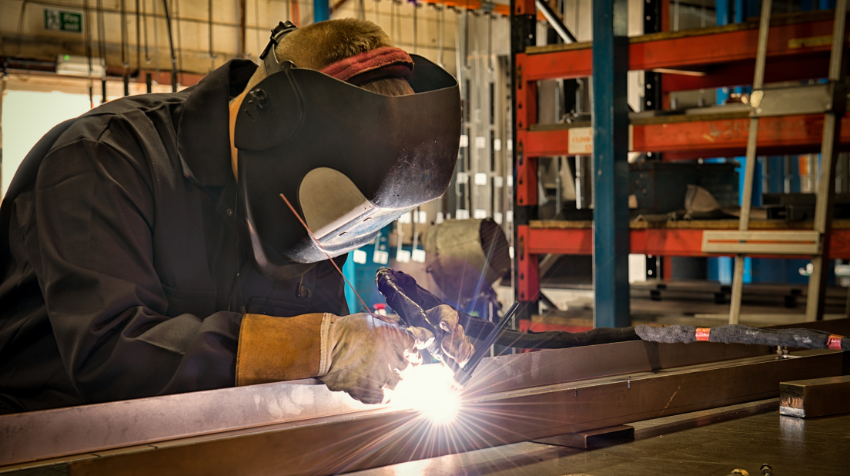Gear Up: In-Depth Analysis and Ranking of the Top Welding Helmets in 2023
Are you looking to up your welding game in 2023? One of the most important tools in your arsenal is a reliable and high-quality welding helmet. Not only does it protect your eyes and face from harmful UV rays, but it also enhances your visibility and precision while working.
But with so many options on the market, how do you choose the right one for you? That’s where we come in. In this article, we’ll provide objective reviews and rankings of the best welding helmets available in 2023.
We’ll break down the top features to look for in a welding helmet so that you can make an informed decision. Plus, we’ll give you tips on maintaining and cleaning your helmet to ensure its longevity.
So suit up, grab your gear, and let’s dive into our comprehensive guide to finding the best welding helmet for you.
Importance of Choosing the Right Welding Helmet
You might not realize it, but choosing the right helmet can make all the difference in your welding experience. When it comes to welding, eye protection is essential. A good quality helmet will protect your eyes from harmful UV rays and infrared radiation that are produced during the welding process. Without proper eye protection, you risk damaging your vision and even blindness.
It’s also important to consider safety standards when choosing a welding helmet. The Occupational Safety and Health Administration (OSHA) requires that all welding helmets meet certain safety standards to ensure maximum protection for the wearer. This includes guidelines on lens shade selection, impact resistance, and headgear comfort. By choosing a helmet that meets OSHA standards, you can be sure that you’re getting a product that has been tested and approved for safety.
Now let’s move on to the top features to look for in a welding helmet…

Top Features to Look for in a Welding Helmet
When searching for a welding helmet, it’s important to keep an eye out for key features that will enhance your safety and comfort while working. One of the most important factors to consider is whether you want an auto darkening or fixed shade helmet. Auto darkening helmets typically provide more versatility and convenience by automatically adjusting to the brightness level of your welding arc, whereas fixed shade helmets may require manual adjustment depending on the task at hand.
Another factor to consider is helmet weight and comfort. Welding can be a physically demanding job, so it’s crucial to choose a helmet that won’t weigh you down or cause discomfort over long periods of use. Look for helmets with adjustable headgear and cushioned interiors for added comfort.
By prioritizing these features in your search for the perfect welding helmet, you’ll be able to work safely and comfortably without compromising on quality.
In the next section, we’ll compare and rank some of the best welding helmets available in 2023 based on these criteria.
Comparison and Ranking of the Best Welding Helmets of 2023
When it comes to choosing the best welding helmet, you’ll want to consider a few key factors.
First, performance evaluation is crucial – you need a helmet that will keep you safe and comfortable while welding.
Second, it’s important to weigh the pros and cons of each helmet in order to choose the best one for your specific needs.
Finally, price and value for money are also important considerations when making your final decision.
By taking all of these factors into account, you can ensure that you end up with a high-quality welding helmet that meets all of your needs.
Performance Evaluation
As you evaluate the performance of your chosen welding helmet, it’s important to consider factors such as durability, comfort, and ease of use. This ensures that your work is done efficiently and effectively.
When testing for durability, make sure to check for impact resistance, scratch resistance, and overall build quality. The helmet should also be comfortable to wear for extended periods of time with a secure fit that doesn’t slide around or cause discomfort.
In addition to durability and comfort, ease of use is another important factor when evaluating welding helmets. Look for features such as adjustable shade settings, auto-darkening filters, and easy-to-use controls. These features can greatly improve the efficiency of your work by reducing the time spent adjusting settings or struggling with a poorly designed helmet.
With these factors in mind, you can better assess which welding helmet will meet your needs and help you achieve optimal performance.
Moving forward into the next section about the pros and cons of each helmet, keep in mind the user experience and durability testing while weighing out the benefits and drawbacks of each option.
Pros and Cons of Each Helmet
You’re curious about the strengths and weaknesses of each helmet, so let’s dive into their advantages and disadvantages.
The first thing to consider is the type of helmet design. Some helmets have a fixed shade lens, while others have an auto-darkening feature. The advantage of fixed shade lenses is that they’re more affordable and reliable since there are no electronic components that can malfunction. However, they require you to lift your helmet every time you need to inspect your work or adjust your position.
On the other hand, auto-darkening helmets have sensors that detect the brightness level and automatically darken the lens when needed. This eliminates the need for constant readjustment and allows for continuous work without interruptions. However, these helmets tend to be pricier than their fixed-shade counterparts and may require battery replacements or charging over time.
Another consideration is comfort vs protection trade-offs – larger helmets may offer more coverage but can also feel heavier on your head during long welding sessions compared to smaller ones with less coverage but better fitment options. Ultimately, it all comes down to personal preference based on individual needs and budget constraints.
When considering different helmet models, keep in mind that each design has its own set of advantages and drawbacks. Some might offer superior protection against sparks and debris while sacrificing user comfort due to weight or bulkiness; others might prioritize ease of use over maximum shielding capacity at higher price points as well as potential battery replacement costs down the line – so choose wisely!
Speaking of price points…
Price and Value for Money
Now that you’ve weighed the pros and cons of each welding helmet, it’s time to consider your budget. Affordability versus quality can be a tough decision when it comes to welding helmets.
On one hand, you want a helmet that will protect you from harm and last for years to come. On the other hand, you don’t want to break the bank.
When searching for the sweet spot in welding helmets, it’s important to find a balance between price and value for money. Look for helmets that offer advanced features such as auto-darkening lenses and adjustable shades without sacrificing durability or safety standards. Consider purchasing from reputable brands with proven track records rather than opting for cheaper unknown brands that may not provide adequate protection.
Remember, investing in a high-quality helmet now could save you hundreds of dollars on medical bills in the long run. So choose wisely!
As important as choosing the right welding helmet is maintaining and cleaning it properly. Without proper maintenance, even the best welding helmet can become unusable quickly.
In the next section, we’ll give you tips on how to keep your helmet in top shape so that it protects you during every job – without fail!
Tips for Maintaining and Cleaning Your Welding Helmet
Keep your welding helmet in good condition by regularly maintaining and cleaning it, ensuring clear visibility and protection during your work. Here are some cleaning tips and a maintenance checklist that you can follow:
- Remove dust and debris: Before cleaning the welding helmet, remove any loose particles with a soft-bristled brush or compressed air.
- Use mild soap and water: Mix a small amount of mild soap with warm water to clean the outer shell of the welding helmet. Avoid using harsh chemicals or abrasive materials as they can damage the lens or shell.
- Clean the lens: Use a microfiber cloth to clean the lens of the welding helmet, making sure to remove any smudges or dirt marks for optimal visibility.
- Store properly: After cleaning, store your welding helmet in a cool, dry place away from direct sunlight or extreme temperatures.
Regular maintenance will help extend the lifespan of your welding helmet while also keeping you safe during use. Remember to check all components regularly for signs of wear and tear, such as headgear straps, ratchets, knobs, and lenses.
In conclusion and final thoughts about maintaining your welding helmet, proper care is crucial for effective protection on-the-job. Neglecting regular maintenance can lead to obscured vision or reduced functionality of safety features over time, which may put you at risk when handling dangerous materials. Therefore, make sure to follow these simple tips on cleaning and maintenance so that you’re always prepared for whatever comes your way!
Conclusion and Final Thoughts
Make sure to take the time to properly maintain and clean your welding helmet so that it can continue to provide you with optimal protection and visibility on the job. One of the best ways to do this is by regularly inspecting all components of your helmet, including the lens, headgear, and shell. If you notice any signs of wear or damage, be sure to replace these parts immediately. Additionally, always store your helmet in a cool and dry place when not in use.
Looking towards future developments in welding helmets, it’s clear that there’ll be even more advanced features and technologies available in the coming years. Whether you prefer a traditional fixed shade helmet or a more modern auto-darkening model, personal preferences will always play a role in choosing the right one for you.
Ultimately, no matter what type of welding helmet you choose, remember that proper maintenance and cleaning are key to ensuring its longevity and effectiveness on the job.

Frequently Asked Questions
Can welding helmets be used for other purposes besides welding?
Looking for welding helmet alternatives? A welding helmet might seem like a one-trick pony, but it can actually be used for other purposes besides welding.
For example, if you’re working with power tools that create a lot of dust or debris, a welding helmet can protect your face and eyes from flying particles. Additionally, some people have gotten creative with their welding helmets and turned them into costumes or even wearable art pieces.
However, it’s important to remember that the primary function of a welding helmet is to protect against harmful UV rays and intense light flashes during welding, so any alternative use should not compromise its protective capabilities.
How do I know if a welding helmet is comfortable enough to wear for long periods of time?
Did you know that 68% of welders experience discomfort while wearing their welding helmets for extended periods of time? That’s why it’s important to consider comfort when choosing a welding helmet.
Comfort assessment should be a top priority, and there are fitting techniques available to ensure the perfect fit. This includes adjustable headbands and padding for added comfort.
When selecting a welding helmet, make sure to try it on before purchasing to ensure maximum comfort during use. Remember, a comfortable welding helmet can increase productivity and reduce the risk of injury caused by distractions from discomfort.
Is it necessary to buy an expensive welding helmet or will a cheaper one suffice?
When it comes to welding helmets, there are affordable options available that may be sufficient for your needs. However, cheaper helmets typically come with a few drawbacks such as reduced comfort and durability.
On the other hand, investing in a more expensive helmet can provide better protection, clarity of vision, and comfort during extended use. Ultimately, the decision depends on your personal preferences and usage requirements.
Consider factors like the type of welding you’ll be doing, how often you’ll be using the helmet and for how long each time. It’s important to find a balance between cost and quality to ensure you have a reliable helmet that will keep you safe while working.
Can welding helmets protect against other hazards besides UV and IR rays?
When considering welding helmets, it’s important to remember that they aren’t just protecting you from UV and IR rays. In fact, industrial applications require helmets that meet safety standards for a variety of hazards.
One such hazard is impact resistance. Imagine you’re working on a construction site and a piece of debris falls from above – wouldn’t you want your helmet to protect you?
Additionally, some welding processes produce harmful fumes and vapors. A quality helmet with proper ventilation can help prevent inhalation of these substances.
So while price may be a factor in your decision, it’s important to prioritize safety features in order to protect yourself on the job.
What is the lifespan of a welding helmet and when should I replace it?
As a welder, it’s crucial to know the lifespan of your welding helmet and when to replace it. Generally, welding helmets can last anywhere from 2-5 years depending on usage and maintenance.
However, if you notice any visible cracks or damage to the lens or shell, it’s time for a replacement regardless of how long you’ve had it. Additionally, if you’re experiencing eye strain or headaches while using your helmet, this could be a sign that it’s time for an upgrade.
Don’t wait until it’s too late to replace your helmet – invest in your safety and ensure that you have proper protection while on the job.
Conclusion
Congratulations on reaching the end of this article! You now have a better understanding of the importance of choosing the right welding helmet and the top features to look for in one.
By comparing and ranking some of the best welding helmets of 2023, you can make an informed decision about which one to invest in. However, remember that simply buying a high-quality helmet isn’t enough.
Proper maintenance and cleaning are essential to ensure its longevity and effectiveness. Regularly inspecting your helmet for damage and replacing any worn-out parts will also ensure your safety while welding.
As you step into your workspace donning your newly acquired welding helmet, imagine yourself as a superhero suiting up for battle against the forces of fire, sparks, and fumes. With your trusty helmet shielding you from harm, you’re ready to conquer any welding project with confidence and ease.
So go ahead, suit up!
Related Source

